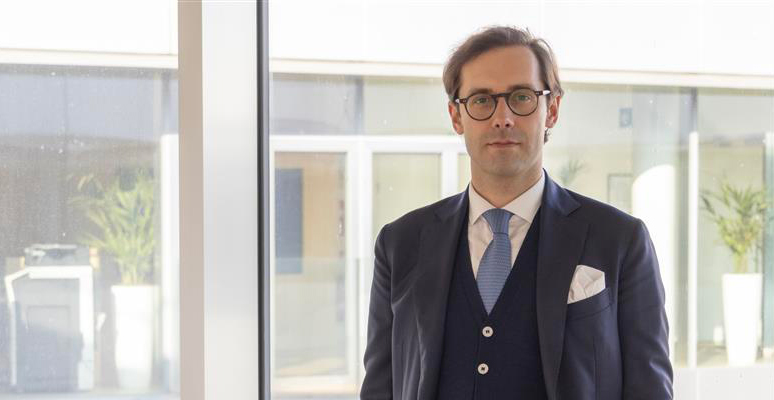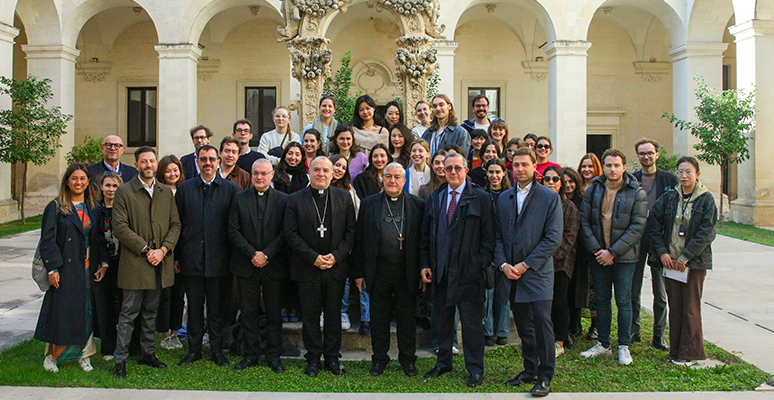FAI and MAMA team up to showcase four jewels of Italian architecture
Few sectors like the culture and arts sector have reluctantly had to learn the meaning of the word resilience over the last two years. In few other sectors has the experience of users - visitors and spectators - needed to be rebuilt on a new basis, having been limited or often defeated by the pandemic. But for some players, this challenge has become an opportunity for reviewing their market positioning, re-tuning to the expectations of audiences and, ultimately, giving new value to their offerings.
This is the case with FAI - Fondo per l'Ambiente Italiano, which has chosen to invest in relaunching some of the assets in its vast heritages and bring MAMA - Master in Arts Management and Administration students on board to this end. Four groups of students have focused on four monumental residences - Lake Como’s Villa del Balbianello, Villa Panza and its Collection in Varese, Villa dei Vescovi in the province of Padua and Palazzo Moroni in Bergamo. They analyzed each site’s current situation, evaluated their strengths and weaknesses, and defined a marketing and communication strategy to relaunch them and set up fundraising campaigns. The process, which ended with the presentation of the four projects to Marco Di Luccio, Operations Director, and the representatives of the four residences, has been a great opportunity according to the participants and the FAI representatives. It allowed to build and field test the specific managerial skills required by this particular niche in the culture industry.
The first of the projects was Villa del Balbianello, an eighteenth-century building with spectacular views overlooking Lake Como. The project started with an in-depth analysis of the context (location and characteristics of local tourism - about 400,000 people visit lake Como every year), the market (the growth of cultural tourism in Italy and specifically in Lombardy was confirmed) as well as direct (other monumental residences) and indirect (other forms of entertainment) competitors in the vicinity. It then analyzed the current value proposition and performance, identifying a development strategy based on promoting low-season visits and associated services (bar and restaurant on the premises) as well as on pricing. It also suggested strengthening digital and social resources to reach foreign targets who are less tied to seasonality (leveraging the international reputation of Lake Como).
The second MAMA group analyzed the seventeenth-century Palazzo Moroni, an example of Baroque architecture at the heart of Bergamo Alta. In addition to its elegant interiors, its strengths are its location in a highly appealing area for tourists (Bergamo will also be the Capital of Culture in 2023) as well as its art collection and the variety of cultural events it hosts. In other respects, the analysis revealed a reduced segmentation of the target as well as room for improvement in management. Short-term suggestions included strengthening its network by involving external subjects (companies, institutions, the art world), better targeting of communication and marketing campaigns, planning specific events, enhancing the museum section. While among the long-term objectives, there are developing an internal accommodation structure and creating international partnerships.
The third project brought us to Villa dei Vescovi, a Renaissance residence at the heart of the Euganean Hills. It is a popular destination for tourists (the rating from visitors is over 4.5 out of 5) not only for its interiors and the large park with a garden, a pond and a vineyard, but also as a location for weddings, special events, aperitifs and conferences. With a hotel on the premises, it features efficient management and good communication that have generated a growth in turnover since the pandemic, leading it to become a "complementary" destination to the tourist itineraries in the area. The strategy developed by the project identified three objectives: broaden the customer base (attracting a young, international audience and art lovers), optimize costs (in park maintenance and property management) and develop the winter season (with Christmas markets, walks in the snow, special private events, etc.).
The presentation was concluded by the group focusing on eighteenth-century Villa Panza, which is perhaps the best-known site to the general public among the four, especially for its collection of contemporary art, that makes this residence unique. The study aimed at identifying strategic objectives to increase the number of visitors by making the villa a strong and unique brand on the contemporary art scene, that will also appeal to people who are not art experts. Among other things, the MAMA group suggested strengthening its offer of cultural events (music, drama, etc.), its network and its presence on digital channels.
“I am very happy with the now long-standing and fruitful partnership between MAMA and FAI,” Marco Di Luccio concluded. “The ongoing exchange and sharing with a young and international university context like SDA Bocconi are the basis for a solid synergy between the two institutions and a source of stimulus and mutual improvement. Professionals who are increasingly oriented toward managerial skills as well as the study and knowledge of the market can really contribute to the continuing growth of the culture and arts sector. Thanks again to the Faculty and students for their commitment to the development of these projects.”
SDA Bocconi School of Management
MAMA turns 10: a conversation with new ...

Shaping the Future Leaders of Arts ...




